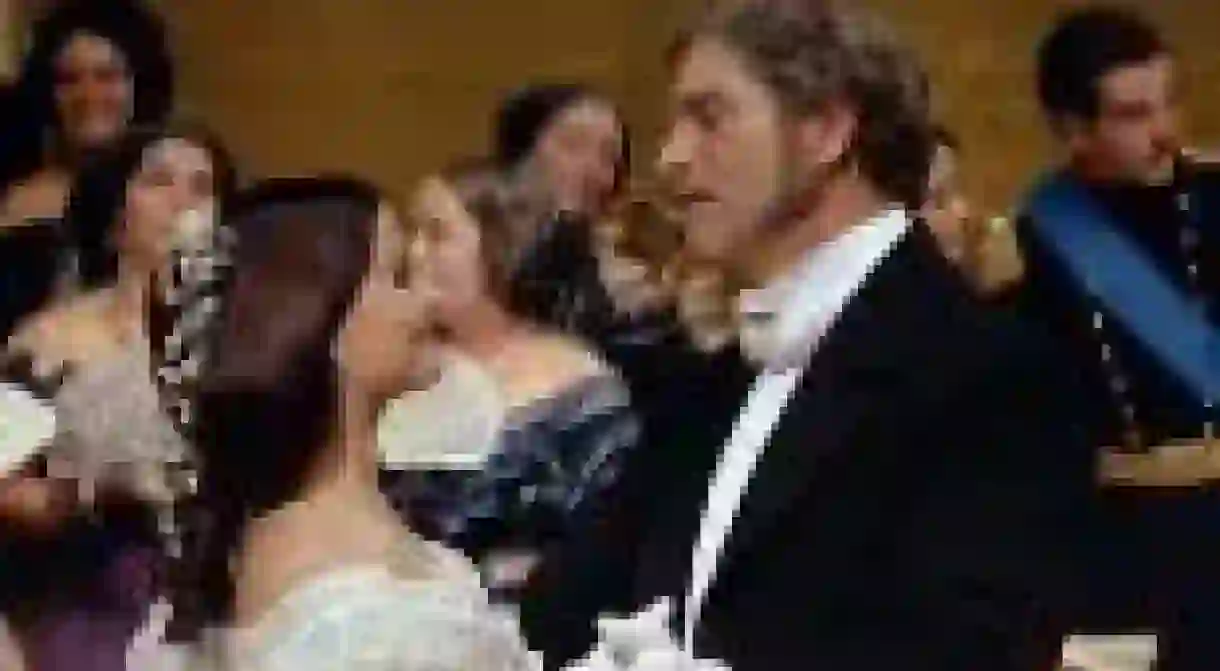Luchino Visconti: The Marxist Aristocrat

Eleanor Mawer discusses the life and work of famed Italian Director Luchino Visconti, looking specifically at the conflict between his aristocratic upbringing, his Marxist principles, and how all this affected his work.
Although from a wealthy background, Luchino Visconti, Count of Modrone, had evident left-wing ideologies which come through not only in the plots of his films, but also in some cases in the ways in which they were made. Like many neo-realist directors he used untrained actors and real locations alongside professionals. This mix of upper-class upbringing and leftist thought contributed to Visconti’s attraction for the post-war PCI (Partito Comunista Italiano), who wanted to find left-wing intellectuals to help their process towards ‘cultural hegemony’.
His first Italian film, Ossessione (1942), is frequently described as having suffered from the Fascist censors. However at its premiere when Mussolini, leader of the National Fascist Party, saw its depictions of Italy as being destitute, dusty and abandoned he declared that the scenes were ‘not Italy’ and stormed out. Ossessione, one of the very first neo-realist films, tells the story of Gino, a travelling mechanic who meets Giovanna, a girl from a very poor and shady background, when he arrives in a hamlet on the banks of the Po River in Northern Italy. Gino and Giovanna form a relationship which eventually leads to murder and tragedy. Despite being produced under the fascist regime Ossessione has elements that subtly deny the regime’s moral authority, depicting Italy under its protection as torn and neglected, and the Italian working classes as led astray by capitalist ideals, giving a hint as to the leanings of his future films. The struggles of the working classes are a theme which he would address time and time again.
In post-war Italy the resistance had developed and projected the image of a ‘new man’ – a being with class-consciousness, and a collective conscience and dignity. The country and its politics were undergoing immense change, and the ex-partisans, mostly left-leaning, were helping to put together and implement the new constitution which defined Italy as a country ‘founded on labour’ despite the expulsion of the PCI from the government. This influence is shown in the prologue of Visconti’s La Terra Trema, as it describes itself as ‘un racconto d’impianto sociale’ – an account of social structure. The story yet again concerns a working class family, this time the Valastro family of Sicilian fishermen, who decide to go against the long standing exploitation of their kind by traders from the city.
As an intellectual and a communist, Visconti wished to express the history and reality of his country as art. In using Aci Trezza, a real town, but omitting almost every trace of time and historical setting the film gives an impression of a historic, feudal Italy where society will be challenged and those who are exploited will come together to struggle for their rights. Rocco e i suoi Fratelli (Rocco and his Brothers, 1960) was the first of Visconti’s films to actually be censored – this time for obscenity – and is a graphic social commentary. The film has parallels with Ossessione in that the main protagonists are all from a working class background, but the portrayals of the male versus female characters are very different. This time the woman, Rosaria – a widow and mother – tries to help her children, her community, and this is spoilt by the temptation of the men surrounding her. Again the themes of old versus new, tradition versus modern ideals, and communism versus capitalism are central
This theme is further explored in Visconti’s 1963 work Il Gattopardo (The Leopard), which contrasts the old status quo with modern progressions. Based on the eponymous novel by Giuseppe Tomasi di Lampedusa – himself an Italian aristocrat, and Prince of Lampedusa – this story tells of an ageing Sicilian Count (the Leopard) who tries to maintain his lineage by setting up a financially advantageous marriage between his nephew and a rich merchant’s daughter. In the end the Leopard must accept that his old, traditional world is being passed on to the nouveaux riches created by the new, capitalist economy.
Il Gattopardo seems to illustrate Visconti’s own move away from his neo-realism towards a more classical style, but it still manages to contain his message intertwined with a fascinating plot. These are just a few of many of Visconti’s films and theatrical works, all of which have a deep and emotional plot-line that has his political stance and message woven so deeply into it that it is nearly lost. His work covered a period of immense change in his country from Fascism to its opposite pole, the liberal 70s. In this long period of time, Visconti himself went through different artistic stages, all vividly exhibited in his films.













